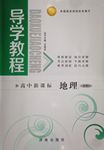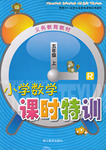题目内容
Plants have family values, too; it seems, with new research suggesting they can recognize close relatives in order to work together.
An ability to tell family from strangers is well known in animals, allowing them to cooperate and share resources, but plants may possess similar social skills, scientists believe.
Susan Dudley and Amanda File of McMaster University in Ontario, Canada, report they have demonstrated for the first time that plants can recognize their kin.
This suggests that plants, though lacking recognition and memory, are capable of complex social interactions.
“Plants have this kind of hidden but complicated social life,” Dudley said.
The study found plants from the same species of beach-dwelling wildflower grew aggressively alongside unrelated neighbors but were less competitive when they shared soil with their families.
Sea rocket, a North American species, showed stronger and healthier root growth when planted in pots with strangers than when raised with relatives from the same maternal(母系的) family, the study found.
This is an example of kin selection, a behavior common in animals in which closely related individuals take a group approach to succeeding in their environment, the researchers said.
Kin selection also applies to competition, because if family members compete less with each other, the group will do better overall. “Everywhere you look, plants are growing right up next to other plants,” Dudley said,“ Usually it’s a case of each plant for itself. But sometimes those plants are related, and there are benefits to not wasting resources on being competitive, and there is not really a cost to not being competitive as long as your neighbor is also not being competitive.”
Learning and memory appear to be important for kin recognition in animals, but this isn’t an option for plants, she noted.
Some researchers speculate(猜测) that plants communicate through their roots, identifying themselves using tiny chemical signatures specific to each plant’s family.
1.What’s the main idea of the message?
A.Studies find plants can recognize, communicate with relatives.
B.Kin selection is important for plants.
C.Animals can recognize and memorize their relatives.
D.Competition asks plants to recognize their relatives.
2.Which of the following is NOT right about animals’ social skill?
A.Animals can recognize and memorize their relatives.
B.Animals’ social skill is to cooperate and share resources.
C.Animals’ social skill can recognize close relatives in order to work together.
D.Animals’ social skill is no use at all.
3.Plants’ kin selection is to ________.
A.grow well B.compete with other kinds of plants
C.strengthen the relationship among siblings D.find which one is the best
4.From the passage,we learn that ________.
A.sea rocket is a South American species
B.sea rocket grows aggressively alongside unrelated neighbors
C.sea rocket grows aggressively alongside its siblings
D.sea rocket is a kind of bush without flowers
5.How can the plants communicate with each other according to experts’ suppose?
A.Plants communicate by using tiny chemical signatures specific to each plant’s family.
B.Plants communicate with each other through their roots.
C.Plants communicate with each other by their leaves.
D.Plants communicate with each other with their flowers.
1.A
2.D
3.B
4.B
5.B
【解析】
试题分析:这篇文章主要讲了研究表明植物也可以识别并且与它们的亲属交流。
1.根据Plants have family values, too; it seems, with new research suggesting they can recognize close relatives in order to work together. An ability to tell family from strangers is well known in animals, allowing them to cooperate and share resources, but plants may possess similar social skills, scientists believe.故选A。
2.根据Learning and memory appear to be important for kin recognition in animals, but this isn’t an option for plants, she noted.故答案应为D。
3.根据The study found plants from the same species of beach-dwelling wildflower grew aggressively alongside unrelated neighbors but were less competitive when they shared soil with their families.故选B。
4.根据The study found plants from the same species of beach-dwelling wildflower grew aggressively alongside unrelated neighbors but were less competitive when they shared soil with their families.故选B。
5.根据Some researchers speculate(猜测) that plants communicate through their roots, identifying themselves using tiny chemical signatures specific to each plant’s family.故选B。
考点:科普类短文阅读理解
点评:本题型考查了对文章段落或某一板块的理解概括能力。先阅读问题,然后带着问题,再读全文,找出答题所需要的依据,完成阅读。在词义与句义理解的基础上,结合上下文总结归纳某一段或几段的大意,对于把握文章主旨,分析全文结构都是至关重要的。纵观历年高考试题,阅读理解试题一般有以下几种题型:一是直接回答who, whom, which, what, where, when, why, how等疑问词引起的细节问题;二是猜测词义题;三是推理判断题;四是综合概括题。在做阅读理解题时,一定要仔细看完,看清楚试题要求再作答,特别要注意NOT,TRUE,EXCEPT等词。有时,要先看题,后阅读文章,带着问题去读短文,可缩短阅读时间,效果也许会更好。

 导学教程高中新课标系列答案
导学教程高中新课标系列答案 小学课时特训系列答案
小学课时特训系列答案A rainforest is an area covered by tall trees with the total high rainfall spreading quite equally through the year and the temperature rarely dipping below l6℃. Rainforests have a great effect on the world environment because they can take in heat from the sun and adjust the climate. Without the forest cover,these areas would reflect more heat into the atmosphere,warming the rest of the world. Losing the rainforests may also influence wind and rainfall patterns,potentially causing certain natural disasters all over the world.
In the past hundred years,humans have begun destroying rainforests in search of three major resources(资源):land for crops,wood for paper and other products,land for raising farm animals. This action affects the environment as a whole. For example,a lot of carbon dioxide(二氧化碳)in the air comes from burning the rainforests. People obviously have a need for the resources we gain from cutting trees but we will suffer much more than we will benefit.There are two main reasons for this. Firstly,when people cut down trees,generally they can only use the land for a year or two. Secondly,cutting large sections of rainforests may provide a good supply of wood right now,but in the long run it actually reduces the world’s wood supply.
Rainforests are often called the world’s drug store. More than 25% of the medicines we use today come from plants in rainforests. However,fewer than l%of rainforest plants have been examined for their medical value. It is extremely likely that our best chance to cure diseases lies somewhere in the world’s shrinking rainforests.
【小题1】Rainforests can help to adjust the climate because they
| A.reflect more heat into the atmosphere |
| B.bring about high rainfall throughout the world |
| C.rarely cause the temperature to drop lower than l6℃ |
| D.reduce the effect of heat from the sun on the earth |
| A.We will lose much more than we can gain. |
| B.Humans have begun destroying rainforests. |
| C.People have a strong desire for resources. |
| D.Much carbon dioxide comes from burning rainforests. |
| A.we can get enough resources without rainforests |
| B.there is great medicine potential in rainforests |
| C.we will grow fewer kinds of crops in the gained land |
| D.the level of annual rainfall affects wind patterns |
| A.How to Save Rainforests |
| B.How to Protect Nature |
| C.Rainforests and the Environment |
| D.Rainforests and Medical Development |